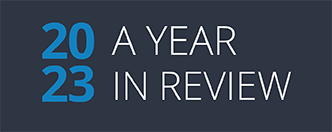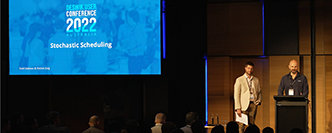Deswik Software Suite v5.0 – New features
Version 5.0 of the Deswik software suite is now available, featuring some exciting new functions and improvements. Here’s all you need to know about our top five enhancements:
1. Considerable resource leveling speed improvements
Our Deswik.Sched team has developed a new and very unique approach to resource leveling with their Linear Progression Algorithm (LPA). Available as an option with the resource leveling framework, this process now runs in a fraction of the time compared to v4.3. Large schedules now run 3 to 20 times faster. Schedules that used to take 20 minutes now run in a matter of seconds.
We continue to expand our integration capability with the addition of new integration options in this release, including:
- Vulcan Version 8 grids/triangulations and design files. This is a major productivity increase as you no longer need to convert your grids through an intermediate text file or export arch_d files from Vulcan. You can now also safely turn off the “v7.5” toggle in your Vulcan options.
- Micromine strings and triangulations
- Minex triangulations (.tr5) files
- Trimble Sketchup files
- acQuire integration
- Blasor export
- LAS files for survey data. With most open cut mines now incorporating some sort of point capture hardware, be it scanner or drone, we have added support for LAS files, so you can generate triangulations without going through an intermediate text format.
3. Faster Pit Shell Optimization
Pit Shell Optimization was introduced to Deswik CAD in v4.2. Up until v5.0, it has used the Lerchs-Grossman algorithm. V5.0 comes with an alternative pit shell optimization algorithm, called Pseudoflow. It provides the same resultant pit shells as Lerchs-Grossman, but faster. The Pseudoflow Pit Shell Optimization Algorithm is more efficient at removing “redundant” options, and therefore reduces processing requirements.
4. Deswik.SViz speedup and enhancements
Our development team has worked hard to provide a more streamlined workflow with schedules in Deswik.SViz (Scheduler Visualizer). If your schedule was created in v4.2 or later, bounding solids for the tasks were built in and they will be loaded automatically by default. There have been significant improvements made to the speed. You should find that selecting tasks in the grid will select the corresponding task solid instantly, and vice versa. Also, Deswik.SViz will update the solids and animation more quickly when the animation or the displayed solids change, for example when you apply a filter..
5. Additional new features in Deswik.Sched
- Update to the formula builder: Grouping Formula from Deswik.CAD have been added to the Formula Builder in Deswik.Sched.
- Scripting: By popular demand, we have added scripting to Deswik.Sched. Not everyone hates scripting!
- Deswik.FM support: We have expanded the file auditability and management across the entire Deswik software platform for greater control. As such, Deswik.FM (File Manager) is now also available in Deswik.Sched.
To keep reading about our favorite v5.0 enhancements, download this list or logon to our client portal to check out the release notes.
Deswik.Sched insight: “Just in time” Scheduling
One of the key advantages of Deswik.Sched (Gantt Chart Scheduling) is the ability to use more complicated methods of scheduling resources and tasks. Deswik.Sched allows the use of As Late As Possible (ALAP) tasks as well as Finish to Start and Finish to Finish dependencies. This is referred to as Just in Time scheduling. The practical application of this is to have your excavation tasks set to As Soon As Possible and your drill and blast activities set to As Late As Possible. As such, your drilling and blasting tasks occur when required for the excavation activity to occur, rather than driving the schedule. It can also be used for your prestrip activities in front of direct production activities to reduce the amount of prestrip occurring in any one period, and ensure that it only happens “Just in Time”. This has an obvious economic benefit by taking advantage of the time value of money by pushing costs (such as prestripping) out to as late as possible.





